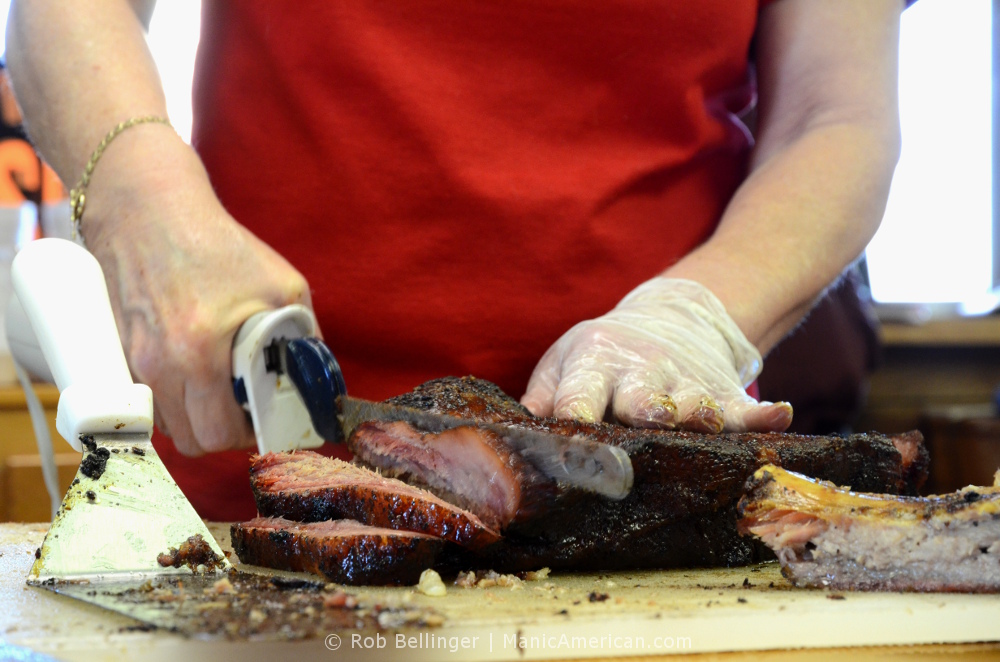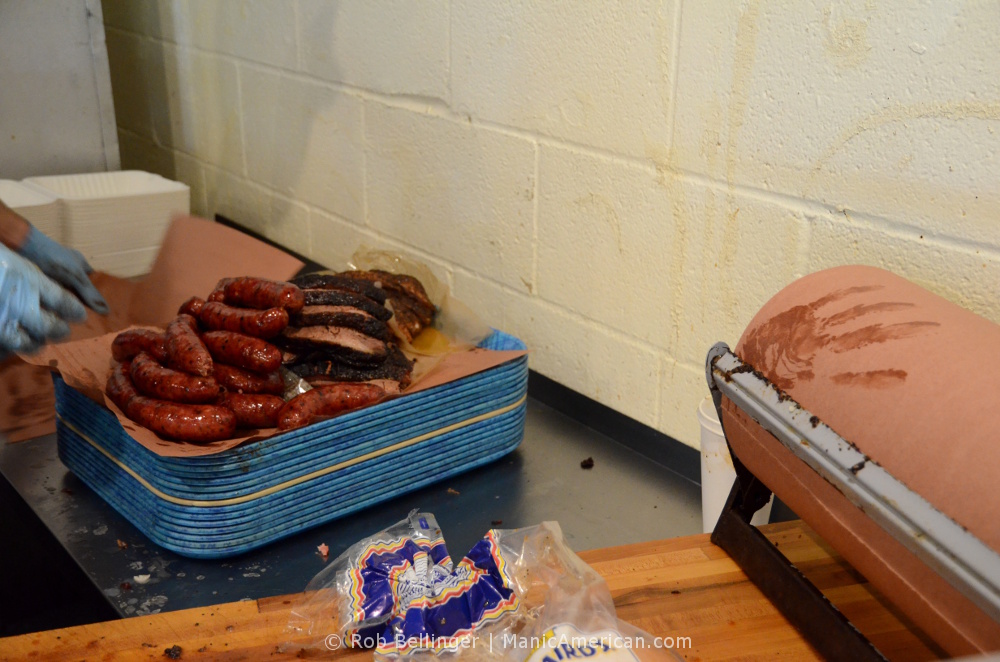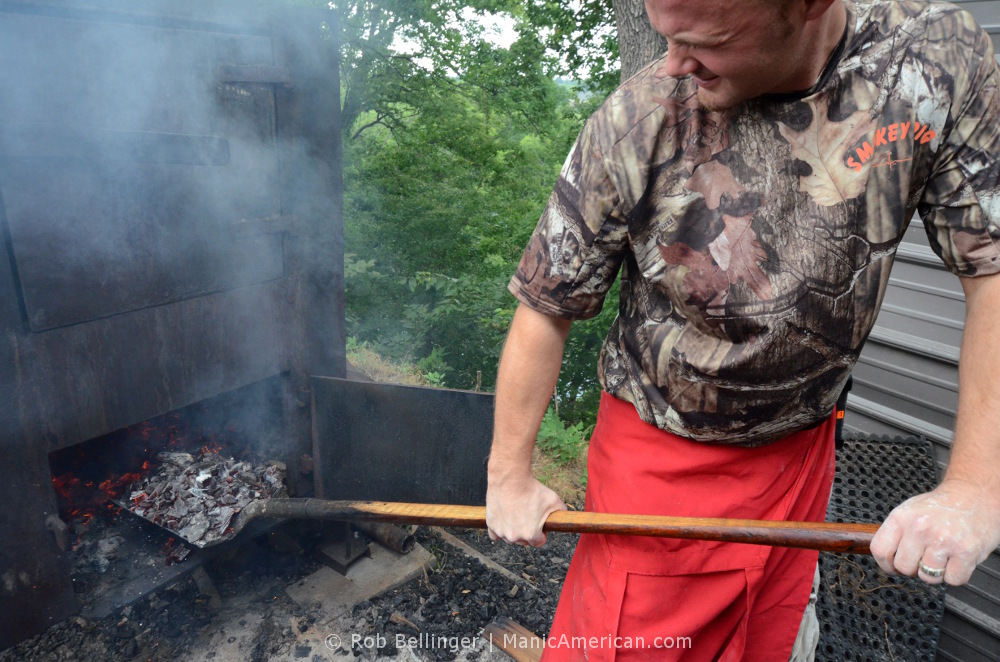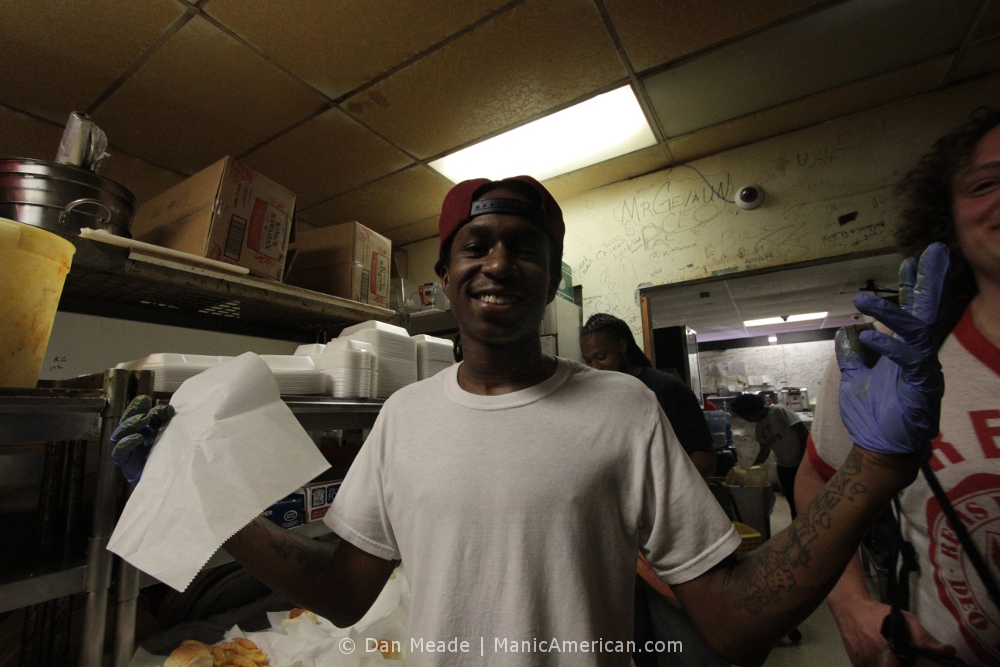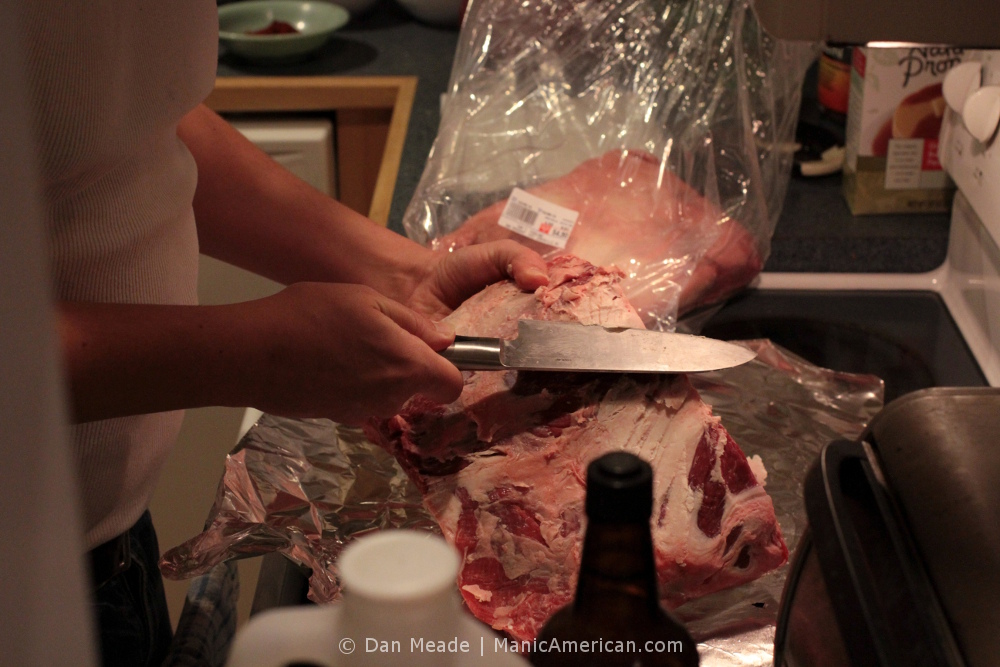Sam Jones opened the door to his walk-in freezer and let us inside. Keith Allen put down his axe and gave us a lesson. Vencil Mares invited us into his office. Kerry Bexley gave us some koozies. Richard Forrest kept his lid open so we could photograph his hog.
We didn’t go to Bovine University to learn about barbecue. We went to where the barbecue comes from and learned from the people who make it. We asked questions, took photos, and made some friends. This process isn’t foolproof, but it has worked often enough that we’ll be talking about it — and showing the photos that have resulted from it — when we host the June 3rd “Nights at the PRC” event at Boston’s Photographic Resource Center.
The theme of the evening is “Interactions,” and it comes from the lesson Allen gave us back in 2009. In between wood-splitting swings of his axe he explained that barbecue is the product of a controlled cycle of fire, smoke, meat, and melting fat. Each element feeds into the other to cook and season the meat. Or as he put it, “It’s all about that interaction.”
There will be plenty of fire, smoke, meat, and fat in the photos we show at the PRC, but that’s not the only kind of interaction we will be talking about.
Barbecue, the end result of Allen’s cycle, can be made in most places, but each dish of barbecue is a highly localized phenomenon. What is eaten, and how it is cooked, reflects how people interact with the geography and climate around them. In Texas, cattle graze near mesquite and oak trees. This leads to brisket. The hills of western Kentucky aren’t ideal for cattle or hogs, but sheep can be raised there. That is where you go for mutton. And Memphis? Our friend Craig Meek wrote an entire book about how pork sandwiches and ribs fit into the socio-economic history of the city.
In other words, if you understand the local barbecue, you can understand the locale.
Craig’s book leads to another kind of interaction, that of person to person. Asking people questions like “What kind of wood do you use?” and “Where do you get your meat?” has led to many interesting conversations. We’ve heard family histories, tales of success and woe, been sent to other barbecue places, and told of places to never venture to. When we connect with the people of each establishment in this way, we get a sense of how they see and understand the world. This informs the photographs we make, and allows us to capture them as people rather than as cooks, staff, or patrons.
The final kind of interaction we’ll be discussing is the natural result of our efforts to understand the craft and culture of barbecue, and it takes place in our backyard. We’ve taken the techniques we’ve learned, mixed them with the hospitality we’ve been shown, and started inviting our friends over for the barbecue we make. From observers and documenters to peer participants, we become the subject in these photos, and in doing so, show another side of American Barbecue.
But that’s just us. After our presentation other photographers will discuss what “Interaction” means to them, and how it factors into their photographs. We do not yet know who the other presenters will be, but we are eager to see their work and hear what they have to say. (Details on how to sign-up are here.)
If you would like to join us on June 3rd, take the B Line to BU West. The PRC is a two-minute walk away, at 832 Commonwealth Avenue. The Night starts at 6:30 and ends around 8:30. Drinks very well may follow.
By Dan Meade & Rob Bellinger
Published: 5/27/2015
Night of Event: 6/02/2015
UPDATE: Sage Brousseau presented a series she is working on where she recreates photos taken by her young daughter. Select works from this series can be seen at www.sagebrousseau.com.
